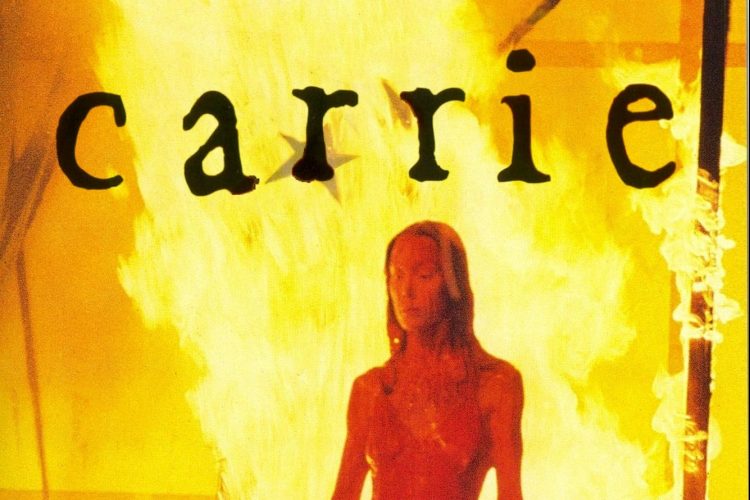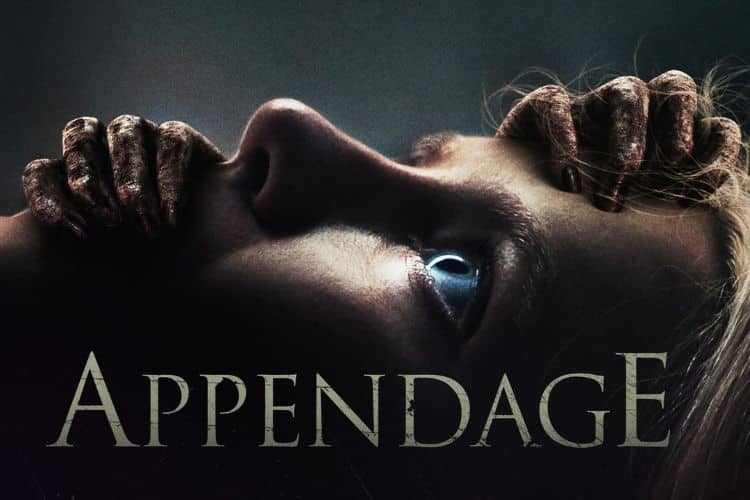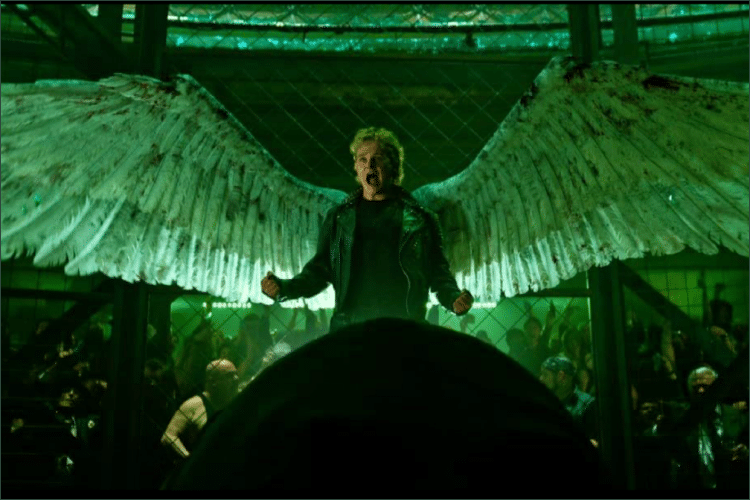“They’re all gonna laugh at you!”
Main Cast: Sissy Spacek, William Katt
Director: Brian DePalma
Does the world need another review of CARRIE? Well, need or not, I’m writing one, so read it or don’t, that’s your choice. But here goes.
Who in the world HASN’T seen this movie? And who in the world DOESN’T know it’s adapted from Stephen King’s first novel? And who can see Sissy Spacek in ANY other movie and NOT see her as Carrie White (except for that Loretta Lynn movie, she was pretty good in that, too)? That’s what a great movie does, it becomes a part of the worldwide trivial stockpile. There may be a few people who still haven’t seen it, but even they know what it is.
CARRIE is the story of Carrie White, a high school senior who’s never felt like everyone else, and with good reason. Toward the end of her last year in high school, Carrie finally experiences her first menstrual period, a very late occurrence in this young woman’s life. It’s never explained why she’s so late in getting a visit from “Aunt Flo”, but it turns out the cycle didn’t come alone. Along with Carrie’s developing body comes a newly developed telekinetic ability.
For the people under the rocks, that means she can move things with her mind. All this comes as a very unwelcome shock, prompting Carrie to think she’s dying in the school shower. She becomes frantic, the other girls, who don’t like Carrie anyway, react in their own way, and begin pelting her with pads from the locker room dispenser. And this is only the beginning. The recurring theme in CARRIE is “blood”. The story begins with it, and ends with it, in a big way.
Carrie isn’t a normal girl, but that’s really all she wants to be. She wants that more than anything else, just to fit in, to feel like she belongs. She isn’t asking to be the most popular girl in school. She just wants to be a girl in school. As it is, she doesn’t even rate that high. “You eat sh!t!” one of her classmates tells her.
That’s where I think this story gets its strength, in the sympathetic protagonist, probably one of the greatest sympathetic protagonists of the past 45 years. That’s a hard enough feat in prose, but to show it in a movie, the portrayal resting on the shoulders of one actress, that can’t be any easier. But Spacek proves she’s more than equal to the challenge.
Who doesn’t know a Carrie White? Hell, some of us have BEEN Carrie White. There’s no one asking these kids to the prom, because in reality, nine times out of ten, if any of those bullies DOES have a sudden attack of conscience, chances are it’ll lead to nothing more than an end to their tormenting. But we feel so much for Carrie White because, while her tormentors aren’t stopping, there is that one person in the crowd who steps up and tries to make it up to her. And seeing Carrie and Tommy Ross together at the prom, it looks like things might actually turn around for Carrie once Monday comes around again.
Well, they should anyway. But what’s a tragic story without a big finish? And when you talk about big finishes in movies, CARRIE packs one of the biggest, and most memorable.
Okay, enough of the story, let’s talk about the movie. Brian DePalma says in one of the documentaries on the DVD that he had, literally, months to plan the movie before filming. The script had been written, all was ready . . . except they needed to raise the money. During the wait, he planned the movie, shot by shot, and that attention to detail shows.
The first shot is not the shower scene everyone thinks it is, but a wide shot of a volleyball game on the school court. We see the girls trying to keep the ball in motion, no one in particular standing out, and slowly the camera moves in until we notice the pale girl at the back, the one who hasn’t touched the ball yet.
The camera keeps moving in, very slowly, and the girls say to hit it to Carrie. The ball comes at her, Carrie misses, and the other girls in the class berate her on the way to the showers, one of them hitting her in the head with a baseball cap. The camera stays on Carrie, never cutting away, and the reaction of Spacek in this first shot alone proves she earned the role. It’s perfectly meek and regretful.
DePalma isn’t just filming a movie, he’s crafting complete shots with just an angle or a cut, a slow motion drift from one end of the locker room to the other, steam rolling across the lens and everything suggesting a perfect mood, an almost soothing, graceful scene–before showing us the blood running down Carrie’s leg.
He does this on purpose. If you can be sure of anything while watching CARRIE, it’s that Brian DePalma knows exactly what he’s doing with each shot. Whether it’s a jump cut, focusing on Carrie’s eyes to accentuate the strength of her power, or a very long, wide shot to slow the pace before a series of short cuts to show the urgency, Brian DePalma is definitely in charge of taking us where he wants us to go.
The cast fit their roles perfectly. Sissy Spacek, as I said, doesn’t simply portray Carrie in the movie, she becomes the girl in every respect: body language, voice tone, she’s got the role down to a T. Piper Laurie keeps the sinister, forbidding edge Margaret White–Carrie’s mother–had in the book, playing the over-zealous Catholic (maybe she’s Christian, I don’t remember if the book specified, but the character here certainly seems more Catholic than Christian, full of guilt and repentance) like she’d been raised on the pulpit. DePalma even shoots Laurie from the ground, making her seem as if she’s towering over the viewer, ready to pronounce judgment.
Nancy Allen revels in the meanness of Chris Hargenson, while William Katt is an almost charming Tommy Ross. It’s funny to learn from the DVD that CARRIE and STAR WARS were casting simultaneously, and that Katt and Irving were originally auditioning for George Lucas. Can you imagine the Greatest American Hero playing Luke Skywalker?
The special effects are limited to a few off-camera tricks, some hidden wires, and stage blood, nothing outlandish or expensive. In fact, CARRIE was made for a mere 1 million dollars. And look at it now. From such a humble beginning, to a horror classic, still talked about over 40 years later, the subject matter just as relevant now as it was then, and the movie making itself still copied, right down to the split-screens DePalma used to great effect and nearly everyone else overuses to horrible effect.
CARRIE is a movie that had all the right things going for it at the right time, a movie that came together because all the planets were in the right alignment or something, a movie that could never be copied (television tried with a 3-hour TV version which was so bad, I half-expected Spacek and Irving to show up halfway through just to show them how to do it right). You wanna see a movie (I’m not even specifying “horror”, because the techniques used here can just as easily apply to ANY genre) done the way they should be done? Just sit down to an hour and 38 minutes of CARRIE–watch and learn.
King on Film
The Shawshank Redemption (1994)
Children of the Corn III: Urban Harvest (1995)
Sometimes They Comes Back … Again (1996)
Children of the Corn IV: The Gathering (1996)
The Revelations of ‘Becka Paulson (1997)
Children of the Corn V: Fields of Terror (1998)

C. Dennis Moore is the author of over 60 published short stories and novellas in the speculative fiction genre. Most recent appearances are in the Dark Highlands 2, What Fears Become, Dead Bait 3 and Dark Highways anthologies. His novels are Revelations, and the Angel Hill stories, The Man in the Window, The Third Floor, and The Flip.






Comments
The Shining 1980 Movie - Kubrick, Nicholson | Movie Rewind
[…] Carrie (1976) […]
A Return to Salem's Lot: King on Film | Movie Rewind
[…] Carrie (1976) […]
Apt Pupil Starring Ian McKellen | Movie Rewind
[…] Carrie (1976) […]
Cain Rose Up (1989): Stephen King Short Film | Movie Rewind
[…] Carrie (1976) […]
Last Rung on the Ladder: Stephen King Short | Movie Rewind
[…] Carrie (1976) […]
Children of the Corn II: The Final Sacrifice (1992) | Movie Rewind
[…] Carrie (1976) […]
Sleepwalkers (1992): Stephen King on Film | Movie Rewind
[…] Carrie (1976) […]
The Lawnmower Man (1992): King on Film | Movie Rewind
[…] Carrie (1976) […]
Golden Years TV Series 1991: King on Film | Movie Rewind
[…] Carrie (1976) […]
Sometimes They Come Back (1991) - King on Film | Movie Rewind
[…] Carrie (1976) […]
The Moving Finger (1991): Stephen King on Film | Movie Rewind
[…] Carrie (1976) […]
Misery (1990): Stephen King on Film Series | Movie Rewind
[…] Carrie (1976) […]
IT (1990 Mini-Series) - Stephen King on Film | Movie Rewind
[…] Carrie (1976) […]
Graveyard Shift (1990) - Stephen King on Film | Movie Rewind
[…] Carrie (1976) […]
The Cat From Hell (1990) - King on Film | Movie Rewind
[…] Carrie (1976) […]
Pet Sematary 1989 - King on Film | Movie Rewind
[…] Carrie (1976) […]
Sorry, Right Number - King on Film | Movie Rewind
[…] Carrie (1976) […]
The Running Man (1987): King on Film | Movie Rewind
[…] Carrie (1976) […]
Creepshow 2 (1987) - Stephen King on Film | Movie Rewind
[…] Carrie (1976) […]
The Lawnmower Man - 1987 Short - King On Film | Movie Rewind
[…] Carrie (1976) […]
Stand By Me (1986) - King on Film | Movie Rewind
[…] Carrie (1976) […]
Maximum Overdrive: King on Film | Movie Rewind
[…] Carrie (1976) […]
Srazhenie (1986) - King on Film - Russian Short | Movie Rewind
[…] Carrie (1976) […]
Silver Bullet (1985) - King on Film | Movie Rewind
[…] Carrie (1976) […]
Cat's Eye (1985) - Stephen King on Film | Movie Rewind
[…] Carrie (1976) […]
Word Processor of the Gods (1984) - King on Film | Movie Rewind
[…] Carrie (1976) […]
Firestarter (1984) - Stephen King on Film | Movie Rewind
[…] Carrie (1976) […]
Children of the Corn 1984 - King on Film | Movie Rewind
[…] Carrie (1976) […]
Christine (1983) - Stephen King on Film | Movie Rewind
[…] Carrie (1976) […]
Cujo Movie Review - Stephen King Stories on Film | Movie Rewind
[…] Carrie (1976) […]
Disciples of the Crow (1983) - Early Children of the Corn | Movie Rewind
[…] Carrie (1976) […]
Woman in the Room, The 1983 - Frank Darabont | Movie Rewind
[…] Carrie (1976) […]
Creepshow 1982 - Stephen King and George Romero | Movie Rewind
[…] Carrie (1976) […]
The Boogeyman Stephen King Short Film Review | Movie Rewind
[…] Carrie (1976) […]
'Salem's Lot - Stephen King on Film | Movie Rewind
[…] Carrie (1976) […]